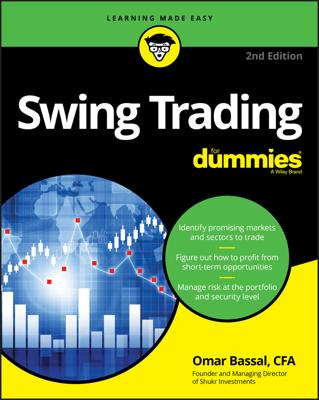Stock investors often fail to capitalize on markets where the trend is neither up nor down consistently but remains volatile. These up-and-down markets with big moves on a frequent basis can be difficult to manage, especially if your portfolio does not have any income-producing components such as dividend-paying stocks or bonds to counter the volatility.
As an options investor, however, you can make money during those times by deploying strategies that are designed with those pesky volatile markets in mind.
Here are some general factors. In a volatile market:
-
Volatility is easier to predict than the direction of prices: It is generally easier, by the use of technical analysis of the markets and individual securities, to predict when a period of strong volatility is near, than which way the market will move.
-
Events may influence the market’s direction: When expecting volatility, it pays to identify potential market events such as key economic or earnings reports.
You can prepare for market-moving events by researching the market’s past responses to them and by paper trading different strategies during similar periods in the future.
The inner workings of option strategies for periods of uncertainty
If you know that the market is likely to move in a big way but you don’t know which way, as an options trader, you can set up strategies that let you profit no matter what the market does. The two strategies that are most often used for this type of market are a straddle and a strangle.
A straddle uses both a call option and a put option based on the same underlying stock. Here are the basics:
-
Buy a put and a call option on the same underlying stock.
-
Use the same month on the put and the call.
-
Use the same strike price.
-
Deploy this strategy when you expect a big move, up or down.
-
Your profits will come when one of the legs of the strategy, the put or the call moves in a big way, hopefully delivering a larger gain than the loss delivered by the losing leg.
A leg refers to one side of the straddle or strangle. For example, the call option is one leg and the put option is the other leg.
Direction is not as important as the size of the move.
A strangle is a slightly different strategy based on the same concept. You expect a big move but you don’t know the direction. Here are the key factors involved in designing a strangle:
-
Buy a call and a put option on the same underlying stock.
-
Use the same month on both the call and the put.
-
Use different strike prices that are usually out-of-the-money (OTM).
-
As with the strangle, the maximum profit occurs when one of the legs of the trade, the put or the call, moves in a big enough way to cover the cost of the overall position.
Because you will pay commission on both the put and the call legs of a straddle or a strangle, you need to factor cost of the entire position when mapping out the breakeven and exit points for the trade.
Key factors about straddles and strangles
There are some key points to keep in mind about straddles and strangles:
-
Strangles can cost less than straddles: Because you are using OTM options whenever possible, strangles can cost less to set up than straddles.
-
Map out your entire strategy before entering your position: Before you buy your call and your put, make sure you’ve calculated your entire entry cost, your breakeven point, and the point of exit of the trade.
By mapping out your entire strategy before putting your money at risk, you will have a better opportunity to weather any storm the market throws at you.
A losing trade is a good trade if the loss is small and if you made the trade at the right time, in the right type of market, and if you followed your exit strategy.

